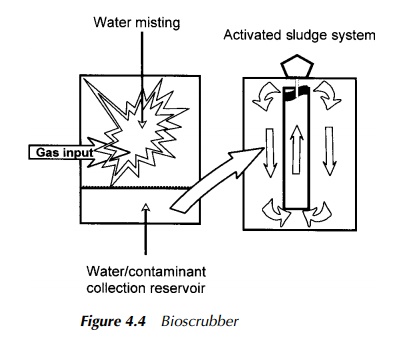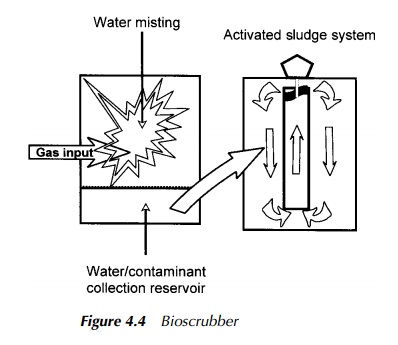Chapter: Environmental Biotechnology: Pollution and Pollution Control
Bioscrubbers - Practical Applications to Pollution Control

Bioscrubbers
Although it is normally included in the same group, the bioscrubber
(Figure 4.4) is not itself truly a biological treatment system, but rather a
highly efficient method of removing odour components by dissolving them.
Unsurprisingly, then, it is most appropriate for hydrophilic compounds like
acetone or methanol.
The gas to be treated passes
through a fine water spray generated as a mist or curtain within the body of
the bioscrubber vessel. The contaminant is absorbed into the water, which
subsequently pools to form a reservoir at the bottom. The contaminant solution
is then removed to a secondary bioreactor where the actual process of
biodegradation takes place. In practice, activated sludge systems are often
used in this role.

As in the preceding case,
process control can be achieved by monitoring the water phase and adding
nutrients, buffers or fresh water as appropriate.
Related Topics